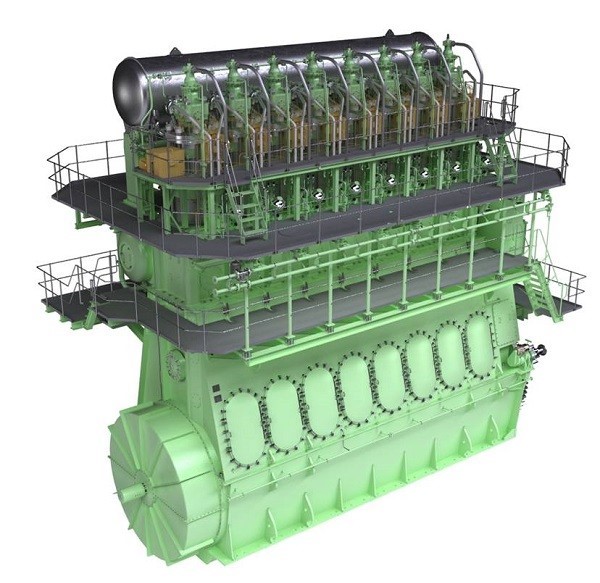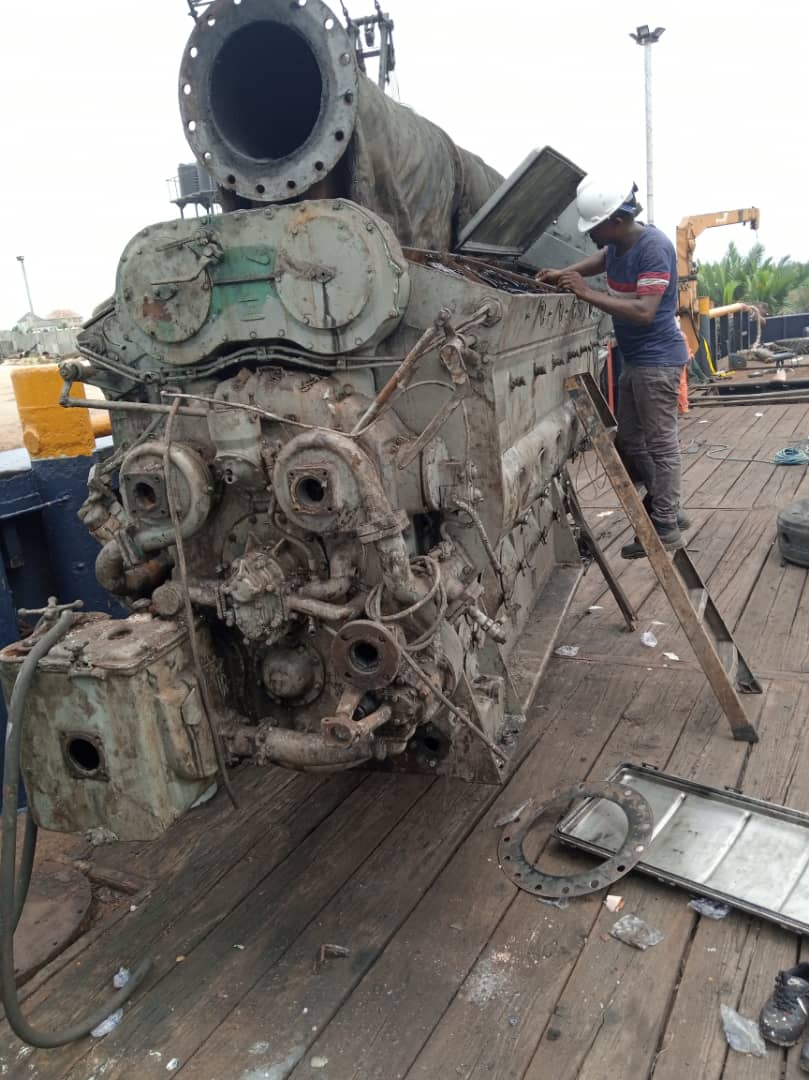8 PROBLEMS FOUND AND SOLVED IN 2-STROKE MARINE ENGINES
The 2-stroke marine engine is the main propulsion power source and also the biggest machinery on a ship. A great amount of effort, resources and time is spent to ensure that this massive engine runs smoothly and efficiently, taking the ship from one port to another without breakdowns.
But no matter how many precautions are taken, problems/breakdowns are bound to take place considering the complexity and number of parts the 2-stroke marine engine has.
In this article, learn about the eight most common problems that are found in the ship’s 2 stroke marine engine and what should be done to tackle them.
1. Stuck Fuel Rack: This is one of the most common problems with oil-fired 2 stroke marine engines. The governor controls the fuel pump delivery through a fuel rack, which is a combination of mechanical links. Sometimes the fuel rack gets stuck leading to a lack of fuel supply in the concerned unit which results in either fluctuation in the engine RPM if running or engine will not start from a standstill.
Solution: All the mechanical links of the fuel rack must be well lubricated and greased before starting the main engine. If after starting the main engine, the engine rpm is constantly fluctuating even at lower speed in calm weather, check all the fuel rack as one or more of them must be stuck.
2. Starting Air Valve Leakage: Any leakage from the starting air valve will lead to hot gasses going back to the engine airline, which may contain thin oil film. Such a mixture of oil and film can lead to a starting airline explosion. This kind of explosion is not very common nowadays due to safety features incorporated in the airline (bursting disk in MAN and relief valves in SULZER/ Wartsila engines). However, one cannot overlook the possibility of malfunctioning of such devices which can lead to an explosion.
Solution: Normally, there is no remote monitoring of temperature for the airline supplying air to starting the air valve. The best way to determine such fault is to check the temperature of the airline manually during maneuvering. This problem is more likely to occur when the engine is started frequently and not when the engine is running continuously.
3. Fuel Leakage/ Fuel Valve Malfunction: Problems in the fuel system are also commonly observed in the main engine. When there is a deviation in the temperature of one unit, the fuel system, especially the fuel valve needs to be checked. Overhauling and pressure testing of the fuel valve must be done as per PMS. If the engine is maneuvered in diesel oil, there are chances of leakage from the pump seals. Also, if the fuel treatment is improper and the fuel temperature is not maintained, it can lead to cracks and leakages in high-pressure fuel pipe.
Solution: Any leakage in the main engine fuel oil system can be determined from the “high-pressure leak off-tank” level and alarm.
4. Sparks in the Main Engine Exhaust at Funnel: Marine engineers normally experience getting a call from bridge officer informing about sparks coming out from the funnel, which is the main engine exhaust. Sparks from funnel occur due to slow steaming and frequent maneuverings, which build unburnt soot deposits on the EGB boiler path.
Solution: Frequent cleaning (monthly) of the exhaust gas boiler to be preferred by the ship staff to avoid this problem.
5. Starting Air Leakage: This is also one of the most underrated yet common problems related to marine engines. The control air supplies air to different parts and systems of the main engine. It is always in an open condition when the engine is in use. Small leakages are normal and can be rectified only by tightening or replacing the pipes or joints.
Solution: When the Engine room machinery is in working condition, it is difficult to hear any air leakage sound. The best way is to trace all the airlines and feeling all the connections/ joints by hand for air leakage. The easiest way to find air leakages is when there is an intentional black outdone for any job. At this moment all the machinery will be in “stop” position and leakage sound (a hissing noise) will be loud and clear. Note the leakage area to perform the repairs later.
6. Stuck Air Distributor: Air distributor is responsible for maintaining the air supply which opens the starting air valve in the engine cylinders. Since it’s a mechanical part, it is prone to malfunctioning, especially getting stuck. The main engine will not start if air distributor does not supply air to open the starting air valves as no air will be present in the cylinder to commence fuel combustion
Solution: Many engines such as MAN B&W have their air distributor located at the end, with inspection cover, which can be opened when the engine is not running for inspection and lubrication to avoid this problem.
7. Malfunctioning of Installed Gauges: It is very important to have local parameter gauges on various systems of the main engine. To note down the readings in the logbook, it is always recommended to take the local readings rather than remote readings. Often engineers find that one or two gauges (pyrometer, pressure gauges, manometers, etc.) installed in the main engine are not working or in dilapidated condition. The reason for such a condition can be due to loosened parts and connections, and even vibrations.
Solution: Replace the faulty parameter gauges with new ones as early as possible.
8. Faulty Alarms and Sensors: The main engine is fitted with various sensors, which measure and transmit actual data to the alarm console. Due to factors such as vibration, high temperature, humidity, dust, etc. these sensors can malfunction leading to false alarms.
Solution: A routine check needs to be performed on all engine room sensors and alarms. Different main engine safety alarms and trips also to be tried out on a regular basis and faults to be attended immediately.
Do you experience any more problems or know any other common 2-stroke marine engine problems which should be added to this list? Let us know how to help you. Call (+234)706 247 6068 or visit www.ugpeotechnique.com.





